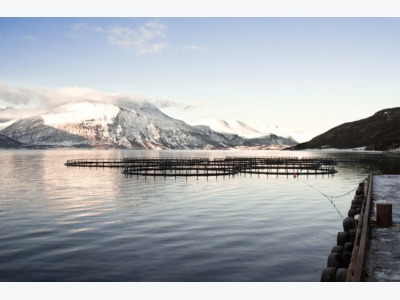Functional fish feeds, gut health, novel proteins: experts to weigh in on hot topics

Functional ingredients can help boost the performance parameters and maintain the health status of fish like sea bream or sea bass, particularly after stressful periods such as transition from hatchery to cage.
The role of functional feeds in modern fish formulations – if they are needed and why – will be one of the topics discussed at our free to access webinar next Wednesday, December 6.
Join us as we go live and talk to André Dumas, Director of Fish Nutrition, the Center for Aquaculture Technologies Canada, Philip Lyons, Research Scientist, Coppens International BV, John Sweetman, International Project Manager Aquaculture, Alltech and Dr Rune Waagbø, Research director, NIFES.
We will ask the experts whether the international fish feed manufacturing sector is doing enough in terms of innovation.
Novel proteins
The speakers will also look at the pros and cons, nutritionally speaking, of the use of novel proteins such as insect meal or gas to feed bacterial meal in salmon feed, and in the diets of other species.
However, the benefits, or otherwise, that ingredients like more traditional protein sources such as processed animal proteins (PAPs) bring to fish feed formulations will be discussed as well.
The potential for true replacement of DHA and EPA derived from marine ingredients with microalgae sourced fatty acids in feed will also be debated; in addition, the panel will assess whether plant based fish feeds could be lacking in nutrients.
We will hear how nutrigenomics can foster sustainable aquaculture, along with a new model to evaluate gut health and growth in salmon.
Có thể bạn quan tâm
 Low-cost enzymes may offer digestion boost to tilapia
Low-cost enzymes may offer digestion boost to tilapia Soybean meal and low-cost enzymes use may offer boost to tilapia production, though results differ when alternative plant proteins are used, say researchers.
 Plant based salmon feeds could be lacking in nutrients
Plant based salmon feeds could be lacking in nutrients Recommendations on vitamin and mineral supplements in the feed for Atlantic salmon need updating, says Norway's National Institute of Nutrition and Seafood
 High-oil residue camelina may support growth in farmed rainbow trout
High-oil residue camelina may support growth in farmed rainbow trout A dietary inclusion level of 80 g/kg high oil camelina meal is acceptable in juvenile rainbow trout diets, find researchers.